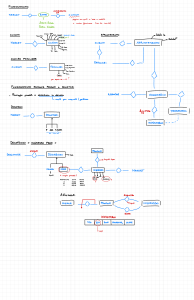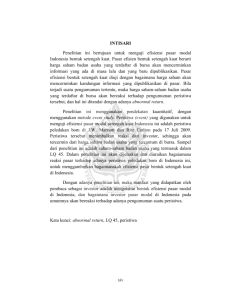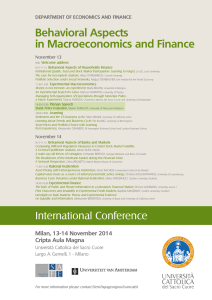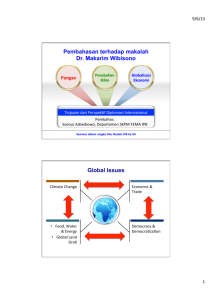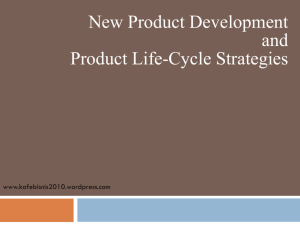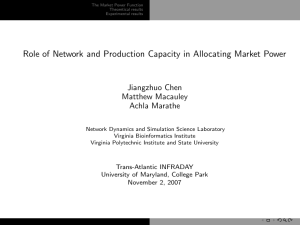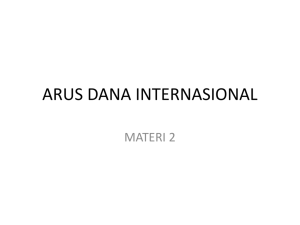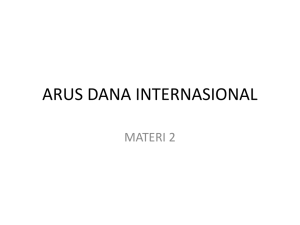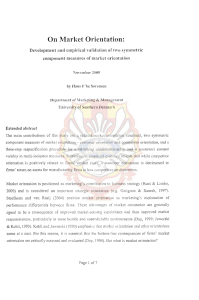Prof. Amedeo De Luca
advertisement
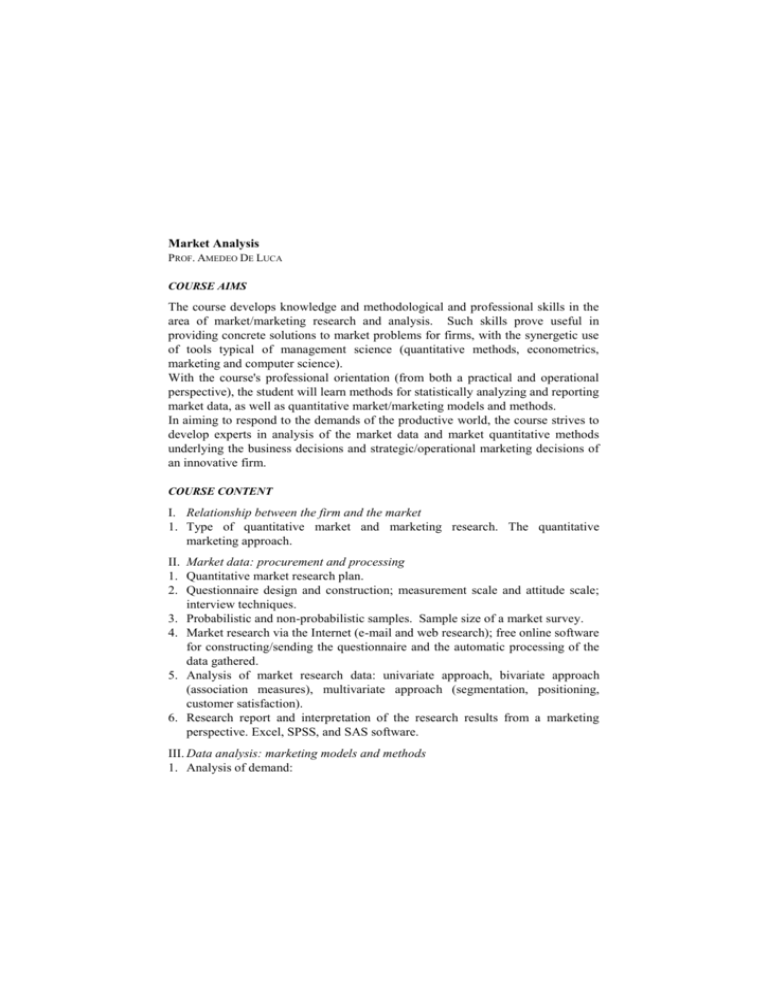
Market Analysis PROF. AMEDEO DE LUCA COURSE AIMS The course develops knowledge and methodological and professional skills in the area of market/marketing research and analysis. Such skills prove useful in providing concrete solutions to market problems for firms, with the synergetic use of tools typical of management science (quantitative methods, econometrics, marketing and computer science). With the course's professional orientation (from both a practical and operational perspective), the student will learn methods for statistically analyzing and reporting market data, as well as quantitative market/marketing models and methods. In aiming to respond to the demands of the productive world, the course strives to develop experts in analysis of the market data and market quantitative methods underlying the business decisions and strategic/operational marketing decisions of an innovative firm. COURSE CONTENT I. Relationship between the firm and the market 1. Type of quantitative market and marketing research. The quantitative marketing approach. II. Market data: procurement and processing 1. Quantitative market research plan. 2. Questionnaire design and construction; measurement scale and attitude scale; interview techniques. 3. Probabilistic and non-probabilistic samples. Sample size of a market survey. 4. Market research via the Internet (e-mail and web research); free online software for constructing/sending the questionnaire and the automatic processing of the data gathered. 5. Analysis of market research data: univariate approach, bivariate approach (association measures), multivariate approach (segmentation, positioning, customer satisfaction). 6. Research report and interpretation of the research results from a marketing perspective. Excel, SPSS, and SAS software. III. Data analysis: marketing models and methods 1. Analysis of demand: – Descriptive segmentation (metric and non-metric cluster analysis) and behavioural segmentation (decision trees); – Territory segmentation, measurement of sales potential and geomarketing; – Measurement of customer satisfaction: base models, regression method using indicator variables (De Luca), cause-effect relationships (structural equations). – Identification of good and bad customers (good and bad credit risks) with discriminant analysis. 2. Analysis of firm's supply: – Positioning of brands/products in perceptive map (factorial analysis and scaling); cases; – Conjoint analysis for the successful launch of new products (planning of marketing experiments); – Calculation of the risk of corporate default with hierarchy segmentation (Basle III approach). IV. CRM, Business Intelligence and Big Data 1. Big Data, CRM, Data Mining, Business Intelligence. Customer life cycle and calculation of its ROI. 2. Measuring loyalty/retention and identification of customers at risk of leaving. 3. Calculation of breakeven point for a promotion and maximisation of its results. 4. Market basket analysis for increasing cross-selling. Analysis of behaviours of web site users (click stream analysis) and web-site optimisation. READING LIST A. DE LUCA, Le ricerche di mercato - Guida pratica e teorica, F. Angeli, Milan, 2006, 2a ed. (textbook; Chapter 1: pages 17-29; 61-71; Chapters 2, 3, 6, 7). A. DE LUCA, Le applicazioni dei metodi statistici alle analisi di mercato, F. Angeli, Milan, 2011, 5a ediz. ristampata (textbook; Parte 1: Chapters 1-5; Sezioni: C, D). A. DE LUCA, Il direct marketing interattivo – Le nuove metodologie, le tecniche e gli strumenti, Ipsoa, Milano, 2007 (Textbook; Chapters 1, 2, 3, 4). A. DE LUCA, Dizionario tematico di Marketing Quantitativo, F. Angeli, Milan, 2007 (Per students not attending class on a regular basis). Instructional and support material. TEACHING METHOD Lectures. Business cases (lab). Assignments carried out with input of experts, with active student participation in IT lab. Project work to implement the course contents. Presentations by business experts. ASSESSMENT METHOD Written test + group project (market research) + possible interview. The written test will consist of 18 questions (closed-end questions, multiple choice questions and open-end questions) and two market analysis exercises. NOTES Further information can be found on the lecturer's webpage http://www2.unicatt.it/unicattolica/docenti/index.html, or on the Faculty notice board. at
